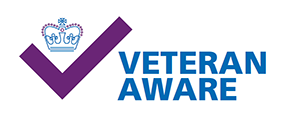Patient Information Leaflets - A
Welcome to the Patient Information Leaflets section
To search for a leaflet, please use the search facility on this page.
Please note if you have any questions or queries relating to the leaflets, please contact the telephone number which appears on the leaflet.
Disclaimer
The information leaflets on this internet site are intended to advise and benefit patients who intend to use, or are using, the clinical services provided by St Helens and Knowsley Teaching Hospitals NHS Trust.
The Trust does not accept responsibility for using the information contained in the leaflets for any other purpose than that described within them.
If you are concerned about your clinical condition you should seek qualified medical advice from your GP or the relevant clinical team at the hospital.
- Accident and Emergency
Title - Rib injury
Description - Rib Injuries/ How to help yourself/ Breathing exercisesTitle - Stitches and Steristrips
Description - Stitches/ Steristrips/ Scar Advice - Acute Medicine
Title - Intravenous diuretics Same day emergency care
Description - Your doctor or nurse has recommended intravenous diuretics, to help manage your condition. This leaflet aims to provide you with information about this treatment. If you attend for this procedure you should not take any water tablets at home on the day you are coming to the hospital.Title - Low Risk Febrile Neutropenia Same Day Emergency Care
Description - Chemotherapy can cause your white blood cell count to fall. This is called neutropenia. When it happens, you are more likely to develop an infection and high temperature called febrile neutropenia. At times, it can be serious and you may need to be admitted to hospital. In many cases, the infection can be managed at home with tablet antibiotics after you have been seen by a doctor.Title - Suspected Pulmonary Embolism Same Day Emergency Care
Description - This is your personal management plan with the aim of helping you stay better informed. A PE is a blood clot which gets lodged in one or more of the blood vessels that supply your lungs. It can be a potentially serious or life-threatening condition. - Adult Learning Disability Services
- Anaesthesia
Title - Cardiopulmonary Exercise Test (CPET)
Description - A Cardiopulmonary Exercise Test (CPET) is used to investigate your exercise capacity. In other words, how your lungs, heart and muscles respond when you exercise. The test is useful for identifying a variety of heart and lung conditions. It can also give us information for a pre-operative assessment, to help decide your suitability for surgery and plan your care after surgery.Title - Information for general anaesthesia
Description - General informationTitle - Information for regional anaesthesia
Description - Information for regional anaesthesiaTitle - Pain Relief using Local Anaesthetic for Rib Fractures
Description - You have suffered a painful injury which has caused fractured ribs. A fracture is the same as a break. You may have noticed that pain is limiting your movement and it is sore to take a breath. It is important to be able to take deep breaths and move about to prevent complications such as a chest infection. You will be assessed to see if a nerve block catheter (thin tube) or a one off local anaesthetic injection will be of benefit to make you more comfortable.Title - Remifentanil Patient Controlled Analgesia (PCA) for pain relief in labour
Description - Remifentanil is a strong morphine-like pain relieving medication, that we can offer to patients in labour on the Delivery Suite. It has a very rapid onset and short duration of action making it well suited to the treatment of intermittent contraction pains experienced during labour. wnloadTitle - Risks associated with your anaesthetic: nerve damage associated with general anaesthetic
Description - Damage to sensory nerves can cause numbness, tingling or pain. The pain can be a continuous ache or a sharp shooting pain. You may also get inappropriate warm or cold sensations. Symptoms can start immediately after an injury to a nerve, or may not appear until several weeks after the initial injury. Damage to motor nerves leads to weakness or paralysis of the muscles in the area supplied by the nerve. These effects may last for variable time periods. Most symptoms resolve within 3 months but full recovery may take up to a year or longer. Rarely






